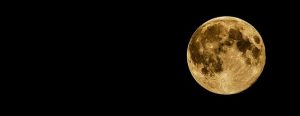By Imam Zaid Shaki
Zaytuna Institute adheres to the traditional principal that Islamic months begin and end based on the confirmed and verifiable sighting of the new crescent moon.
While there have been claims of moonsightings on Wednesday November 2nd, they are extremely few and Zaytuna has been unable to establish their veracity and reliability according to the criterion we employ for establishing certainty that the moon has been sighted. For those who personally feel certain that the moon was sighted, we welcome and encourage you to celebrate a blessed Eid on Thursday, however, Zaytuna Institute will be celebrating Eid on Friday, November 4th insha’Allah. Click Here for a statement by Imam Zaid on the matter.
In The Name of Allah, Most Gracious, Most Merciful
As has been the case a number of years here in North America much contention, and confusion has accompanied what should be our most festive time of the year. As has been the case in each instance a chain of events is set in motion by early – based on all credible scientific information- moon-sightings coming from the Middle East. In that regard, no matter what we decide in this country to do to end this confusion, a starting point will have to be our unanimous agreement that the countries in the heartland of Islam have abandoned using naked-eye sighting as a criteria for determining our sacred occasions. Hence the abandonment of the Prophet’s, Peace and Blessing of Allah upon Him, command, “Fast based on its [the crescent moon] sighting, and end your fast based on its sighting.”
That said, the confusion at the end of Ramadan is particularly trying this year because all of the major Islamic organizations and moon-sighting experts agreed that it would be impossible to sight a crescent in the continental United States, or even in Hawaii, on Wednesday evening, November 2, 2005. Hence, we were told, ‘Id would be Friday, November 4, 2005. Therefore, the almost unanimous declaration of ‘Id being Thursday, November 3, 2005, has left many Muslims stunned, and justifiably dismayed.
Here at Zaytuna Institute, we have adopted what we feel is a reasonable approach to this problem, an approach which aims at accomplishing the following objectives:
- Take the determination of our sacred days out of the hands of foreign organizations, or those domestic organizations that are influenced by foreign organizations. The reasoning behind this objective is not to impugn the credibility of those organizations. Rather, it is a move we feel will help greatly to end the confusion that surrounds the determination of our sacred dates. Our community is the most diverse in the Muslim world. We have Muslims who hail from at least 60 different countries with Muslim majorities or sizeable Muslim minorities. If all of these disparate communities followed their own countries for the determination of our sacred dates, we would have at least three different dates for each of our occasions, as has happened in some of our communities in the past. If for no other reason, this situation should be avoided for the sake of those who have converted to Islam in this country, and deserve to be spared an imported version of the divisiveness and lack of vision, which prevails in the Muslim homelands. This issue provides a litmus test for those who preach, in the aftermath of 9/11, of the imperative nature of establishing a unique American Muslim identity. If we are willing to sacrifice the greater good of our community for our enthusiasm to be united with our folks back home, then the idea of a unique identity is far from becoming a reality.
- Use a base of scientific facts as a standard for accepting moon-sightings. As we all know the issue of moon-sighting has become highly politicized. That politicizing has led to a tremendous incentive to produce claims of sightings, some of which are incredible. Because of the tremendous incentive to “find” a sighting, and because of the overwhelming implications of a sighting for the validity of acts of worship for literally millions of people, we feel that a scientific base for the acceptability of a sighting has to be established. In summary, we have declined to accept sightings that are inconsistent with generally agreed on scientific models of crescent visibility. In every instance, sightings that contradicted established astronomical calculations have proven unreliable, upon investigation. Saying this, we do not rely on calculations for the timing of the occasions, just to establish a baseline of acceptability of reported sightings.
- We have endeavored to establish our own network of moon-sighting teams throughout the country, working in tandem with other networks. We also consult veteran moon-watchers, some of who have been tracking the moon monthly for over twenty years. This consistency allows for a sense of when the crescent should be seen as the veteran moon-watcher is sensitive to the alternations of the 29 and 30-day cycles of the moon. None of these veteran moon-watchers have given any credibility to any of the reported 11-2-2005 sightings.
Conclusions
Based on the considerations mentioned in #2 above, we believe that none of the sightings reported in North America on the night of Wednesday, November 2, 2005, were credible. Not only were the reported sightings in Maryland and Chicago outside of projected visibility curves, even with optical aids, by 3000 miles, they apparently occurred in areas where there was no confirmed sighting of the crescent at the beginning of Ramadan. Therefore, in reality, those areas are in fact alleging sightings on what in their locales is the 28th of Ramadan.[1] As for the Arizona sighting, it was alleged by a non-Muslim who was accompanied by eight Muslims who did not see the moon.
We consider these sightings anomalous as they were not substantiated by reports of sightings by qualified teams further west, neither here in California, nor even in Hawaii.
There was a report of sightings in Mauritania. While those reports may suffice the people there, they contradict the considerations mentioned in #1 and #2 above. As for the second consideration, the age of the moon at the time of the reported sighting was 17 hours. This would be a near world record sighting, at a time of the year when the longitude of the locale, angle of separation at sunset, orbit of the moon, and atmospheric conditions all would argue for a possible sighting at about 35 hours. Allah knows best.
In conclusion, we are not arguing as to what actually occurred concerning the reported sightings, only that we need a criteria for ending the madness that has seized our community here in North America. Based on the criteria we are employing, we consider the sightings discussed above doubtful. Therefore, we feel out of precaution, it is best to adhere to the legal principle that certainty cannot be removed by doubt. We are certain about Ramadan, while the entrance of Shawwal is doubtful. Hence, the original state of fasting should be maintained. Therefore, at the Zaytuna Institute we advise fasting Thursday, and celebrating the ‘Id on Friday, November 4, 2005.
However, there is another consideration, that is the spirit and intent of ‘Id. As one of the great signs of Allah, whose underlying spirit is unity, and celebration, we feel that if a Muslim is in an area where the overwhelming majority of his/her community, family, and friends are celebrating the ‘Id on Thursday, November 3, 2005. He/she should join them if his/her heart is at peace with that decision. However, he/she should make up the day out of precaution as soon as possible.
We pray that the day will soon come when we are blessed with the leadership necessary to lead our community beyond this demoralizing confusion. We pray that the day will soon come when a true American Muslim identity that gives us the confidence to do what is in the best interests of Muslims living here in America is created. May Allah guide us all to that which He loves and is pleased with. He over all things has power, and His help is constantly evoked.
Source: http://www.zaytuna.org/







